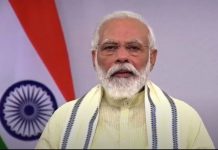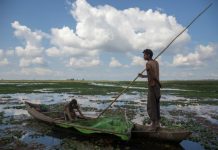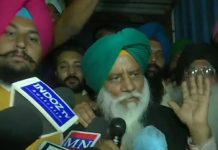The background of the exercise could be traced to the demands raised in the 1980s to update the 1951 Register. In its immediate phase, the process of updating was carried out over 4 years, incurred an expenditure of Rs 1,220 crore and involved 40,000 government employees and 8,200 contractual workers. Since 2015, the Supreme Court had been monitoring the exercise and the NRC Coordinator was required to periodically communicate the status of the exercise to it.
For years, leading student organisations, pressure groups and prominent civil society members looked up to the NRC as an exercise towards resolving the vexed immigration problem of Assam. In a way, it would not be wrong to suggest that the activism and petitioning of these groups played a significant role in initiating the exercise to update the Register.
At 10 am on 31st August, the NRC authority released the “Supplementary Inclusions List” that consisted names of those included in the NRC after they had filed “claims” against their exclusion. The publication of this list concurrently revealed that, of all applicants, around 19 lakh residents of Assam have been excluded from the final version of the Register.
Moments after its publication, the credibility of the updated NRC was severely questioned by certain political parties, pressure groups and members of the civil society. This included leading stakeholders of the updating exercise like the Bharatiya Janata Party (BJP), Asom Gana Parishad (AGP), All Assam Students Union (AASU) and Assam Public Works (APW). Some also complained of the connivance of NRC authorities to wrongfully include illegal immigrants in the NRC. A fresh round of contention over Assam’s vexed citizenship issue has been brewing since then.
The primary contention made by most of the organisations and actors pertains to the quantum of exclusions. The leaders of almost all the aforestated organisations acknowledged this. These organisations as well as many others in Assam are unhappy because they consider that the quantum of exclusion is substantially lower than what they had expected. Both the State BJP President as well as the AASU Advisor pointed out that the number of exclusions did not correspond to their presumed estimate. Given the ease with which such claims are being made, it is therefore pertinent to interrogate the basis of such an assumption.
From time to time, different estimates have been provided about the number of people living illegally in Assam. There is however little clarity about the basis of these estimates. Between the publication of the 1951 Register and the current updating exercise, no step of similar scope had been undertaken for mapping citizens and immigrants. Attempts are usually made to establish the enormity of influx by referring to census data and comparing population growth over time. But these exercises remain conjectural because such data does not objectively point out and distinguish between citizens and immigrants. The credibility of such modes of analysis also suffer because these enquiries tend to downplay the variable of high birth rates. Professor Abdul Manna, formerly with Gauhati University, has shown that Muslim population growth in Assam has been largely driven by the high fertility rates among a segment of the community. This explains why some districts like undivided Goalpara has always exhibited a high Muslim population since the first census of 1871. Consequently, these interpretations largely remain within the realm of speculation.
Some have also contested the lower number of exclusions because the figure is not at par with the estimates presented by important political leaders at various points of time. It is true that as Home Minister, Indrajit Gupta stated that there were 42 lakh illegal migrants while Sriprakash Jaiswal estimated the figure to be around 50 lakh. But the credibility of these figures remains questionable. As stated above, very little is known about the processes through which these leaders arrived at their estimates. Infact, the arbitrariness of these estimates could be grasped by recalling the volte-face of Hiteshwar Saikia after quoting one such estimate. While addressing a public meeting, Chief Minister Saikia stated that there were 30 lakh illegal Bangladeshis in Assam only to claim after a few days that there was not even a single Bangladeshi.
A few intellectuals have justified such estimates of politicians by arguing that they are based upon intelligence reports. Such investigations by the agencies are essentially opaque and not guided by any objective schedule or methodology. Yet, these intellectuals are more inclined to accept the credibility of such figures instead of the estimate provided by the NRC. Despite its shortcomings, the updating exercise has been conducted through a rigorous methodology, involving latest technology, multiple checks and under the monitoring of Supreme Court. This ensures that the estimate of exclusions provided by NRC is relatively more closer to the objective situation in comparison to previous attempts of analysis, investigation or speculation. This is not to say that there is no scope for error in the NRC. As a bureaucratic exercise, the Register would undoubtedly have some amount of clerical and technical errors. But at the same time, the procedural depth of the exercise bestows it with a threshold of credibility that is inevitably higher than estimates guided by presumptions.
The net effect of such behaviour is to undermine the rationale of the NRC exercise. Assam has been experiencing influx for over a century now. But there was no objective estimate of its extent. The fallout of this led to the development of a political climate where the citizenship rights of many remained under suspicion. It was expected that the scientific basis of the updating exercise would add a measure of objectivity to vexed questions of citizenship and influx. But instead of resolving such ambiguities, the attitude of these organisations and actors has pushed the legitimate citizenship rights of many individuals back into the realm of scepticism.
The negative responses evoked by the lower number of exclusions provide a glimpse into the social psyche of many in Assam. It seems that the credibility of the updating exercise has become contingent upon drafting a Register that is characterised by high number of exclusions. For years, the issue of influx has mediated everyday life in Assam. A lower number of exclusions could therefore unsettle the psychological moorings of many whose discontents and struggles have been informed and rationalised by the threat perception associated with influx. This also has the potential to undercut the legitimacy of the politics that has grown upon it. The discomfort with the figure of exclusion could be explained in this way.
The politics of citizenship is thus on the verge of trumping humanity in Assam.
Every step taken in the name of resolving the issue of influx has only made the muddle of citizenship even murkier than before. A range of contradictory processes steadfastly perpetuate this situation while ensuring that citizenship rights remain elusive to many. While on one hand, the excluded persons are about to begin a tedious appellate process, groups like APW are already clamouring for hundred percent re-verification of the complete Register. At the same time, a pending petition by Assam Sanmilita Mahasangha could potentially reverse the base year of citizenship from 1971 to 1951 while the proposed Citizenship Amendment Bill, 2016 proposes to extend citizenship rights to persecuted minorities who entered India till 2014. Unfolding of these processes would not only nullify the NRC but also unleash newer ordeals for individuals in their quest for citizenship. All this comes at an extraordinary human cost.
Abhinav P. Borbora is a Political Commentator based in Guwahati.











